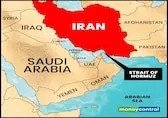Rising oil prices: these sectors and stocks will have the most impact
New Delhi, 23 June 2025: Crude oil prices have reached five -highest level in the middle of the Middle East and threatened to close the hormuz directly by Iran. Brent crude prices rose nearly 2% to $ 78.53 per barrel, while some analysts warned that it could go up to $ 130 if the situation worsened. India, which receives more than 85% of its crude oil requirement, is expected to have a profound impact on many regions and shares.
Oil Marketing Companies (OMCS):
The most direct impact of oil prices is on oil marketing companies such as Hindustan Petroleum (HPCL), Bharat Petroleum (BPCL), and Indian Oil Corporation (IOC). The increase in crude oil prices increases the cost of treatment of these companies, but they are not able to fully pour this increased cost to consumers, increasing the pressure on their profit margin. According to experts, if the oil prices last longer, the shares of these companies may see a decline.
Aviation field:
Aviation companies such as Indigo and SpiceJet are directly affected by the increase in jet fuel prices, which are associated with crude oil prices. Fuel cost is a large part of the operational expenses of these companies. Increased prices may lead to an increase in ticket prices or a decrease in profit margin. The aviation sector is also being counted among the most affected areas of trends on social media platforms.
Paint and Chemicals:
Paints and chemical industries, such as Asian Paints, Berger Paints and Pidilite Industries, are dependent on crude oil. The increase in oil prices increases their cost of raw materials, which affects the cost of production and eventually the prices of products. In addition, pressure can also be seen on shares of chemical manufacturers such as nitrite, humor orgenics and Tata chemicals.
Automobile and Tires:
Automobile manufacturers, such as Maruti Suzuki and Tata Motors, face rising costs with plastic, rubber and overall petroleum. This can increase the production cost of traditional vehicles. However, electric vehicles (EV) manufacturers may have indirect benefits from rising fuel prices, as consumers can turn to EVS to avoid the cost of fuel. Tire companies, such as MRF and Ceat, can also be affected by the increasing cost of raw materials.
Logistics and Transport:
Logistics and transport sectors, such as container corporations and Transport Corporation of India, are affected by the rising fuel prices, as this increases their operating costs. In addition, sea transport costs and increase in insurance premiums can also put pressure on the region.
Consumer Material (FMCG):
The increase in oil prices increases the cost of transportation and packaging, affecting FMCG companies such as Hindustan Unilever and Nestle India. In addition, the demand for non-essential goods may decrease due to lack of purchasing power of consumers.
Beneficial Area:
On the other hand, oil producing companies like ONGC and Oil India may benefit from rising prices, as their income increases. A safe investment option such as defense stock and gold can also get attraction among investors.
Economic effects:
For India, which has imported a record of 23.32 million tonnes of crude oil in May 2025, an increase in oil prices may increase import bills, which can increase inflation and pressure on the rupee. However, imports from Russia, which do not pass through Hormuz Strait, reduces India's dependence.
